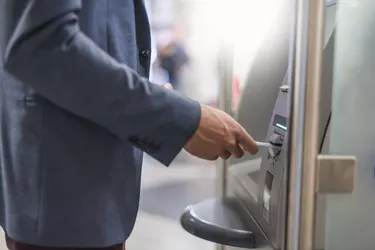
Financial institutions are required to report cash withdrawals in excess of $10,000 to the Internal Revenue Service. Generally, your bank does not notify the IRS when you make a withdrawal of less than $10,000. However, if a bank employee suspects that you are structuring transactions to try to avoid IRS reporting requirements, then the employee must complete a report on your transactions regardless of the amount withdrawn.
Tip
You can withdraw $9,999 from your savings account without the bank reporting the transaction to the IRS.
Video of the Day
Large Currency Transaction Report
The Money Laundering Control Act of 1986 enabled banks to begin completing Large Currency Transaction Reports (LCTR) on individuals who conduct transactions involving more than $10,000 in cash. The 1970 Bank Secrecy Act included a provision requiring such reports but at the time privacy laws prevented banks from sharing information with the Internal Revenue Service. The 1986 act, which was aimed at preventing money laundering, ruled that banks had to share information with federal agencies regardless of privacy laws.
Video of the Day
Reported Information
The LCTR includes the name, Social Security number, date of birth, residential address and occupation of the person conducting the transaction. If you make a large cash withdrawal from your savings account, you must provide the teller with all of the information needed to complete the form, including details of any other person or organization involved. Banks and bank employees who fail to complete LCTRs face fines. Your bank must complete an LCTR if your account withdrawals within a 24-hour period exceed $10,000, so you cannot avoid the report by making several withdrawals rather than one large one.
Suspicious Activity Report
Some people try to structure their withdrawals so that the bank does not complete an LCTR. However, the IRS requires bank employees to complete a report called a Suspicious Activity Report on anyone who seems to be attempting to avoid detection. Bank employees can complete an SAR any time you make one withdrawal or a series of withdrawals from your account that amount to more than $2,000. Bank employees do not tell you about the SAR, whereas you are notified about an LCTR.
Misconceptions About the IRS
Accountholders often think that the IRS requires banks to complete reports detailing large transactions in order to ensure people are filing their income taxes correctly. In reality, the IRS uses the reports to detect and prevent money laundering, terrorism and other types of illegal activity. However, IRS regulations do prevent bank employees from assisting you with tax evasion, so if you reveal to a bank employee that you are trying to avoid paying taxes, that employee must file an SAR.